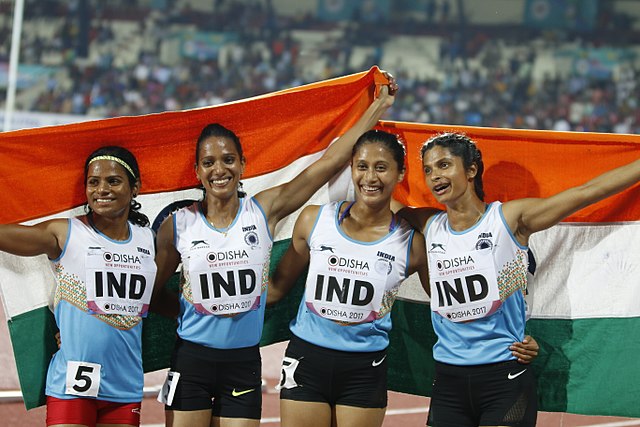The term paradigm shift is an interesting one. If you considered a dictionary meaning then it will reveal a paradigm shift as a shift in direction of any business or strategy of a nation from the past for the betterment of future, or something along those lines. If we keep the year 2000 as a starting point, what is that moment when you felt Indian sport made that shift?
Two occasions instantly come to mind.
The first was in 2007 when the India cricket team travelled to South Africa for the T20 World Cup. After a demoralising World Cup campaign in the West Indies played earlier that year, India’s cricket mad public needed a lift. In South Africa, a young team, a young and inexperienced captain, promised excitement but not much hope to go all the way. But Dhoni and his motley crew had other ideas. Throughout the fortnight, the Men in Blue played an exhilarating brand of cricket that was high on flair, attitude and guts and they topped it off with a nerve-jangling final over victory over our most storied rivals.
The other occasion, almost exactly a year later, was at the Chinese capital. For every Indian, an individual Olympic Gold had become the very definition of the monkey on the back. At the Beijing Shooting Range Hall, Abhinav Bindra decided enough was enough. In an absorbing 10m air rifle final, Bindra performed flawlessly and delivered a golden moment that filled every single Indian with pride and inspired many others to stick it out in training for one day it could be they who had an Olympic gold slung around their neck.
But do these qualify as a shift? Maybe, maybe not. But here another case can be made. The first season of the Indian Premier League.
If Roman Abramovich’s takeover of Chelsea ushered in a new era for the Barclay’s Premier League, then the same can be said of the inaugural IPL Season which took place a little over a decade ago. Till the explosion of the IPL into the global conscious, Indian sport’s chief exports were still restricted to our athletes. But IPL changed that and how! India finally had a product that viewers – both at home and abroad – couldn’t get enough of, this super charged, thrill-a-minute ride that truly brought the ‘hyperactivity’ of European club football to the erstwhile meandering pace of International Cricket, and this is with all due respect to ODI’s.
There was T20 cricket before the IPL but after the IPL, it became synonymous with it.
For a country obsessed with cricket, the popularity of the Indian Premier League has been galvanised by the Indian consumer’s rising disposable income and the country’s youth – the largest in the world. The young and happening in India had a product that matched their attention spans and with opinion merchants frolicking on social media and giving brands impressions to salivate over, the sporting ecosystem took on a new moniker. The success of the IPL is evident a decade later; just look at the dizzying numbers being speculated for the battle for the IPL rights. But this tide of success has also lifted other boats and resulted in a mushrooming of sports leagues. Badminton, MMA, Wrestling, Football, you just need to name a relatively popular sport and you have a league.
And for all these sports, they finally got that one thing they craved for: attention.
Without these eyeballs, this sense of connection, how will the money factor be addressed? Government spending can only go so far, but these leagues have proved havens for brands and the trickledown effect has meant athletes getting the sort of remuneration their efforts have warranted. No denying, more can be done but at long last there is some something to build on. Our growing confidence in India’s place in the world has also helped and this has reflected in our athletes, no doubt bolstered by the fact that Indian sporting success is no longer isolated to just cricket. A perfect example of this new-found confidence and the evolution of the Indian sporting system was at the Rio Olympics last year.
The story of three incredible Indian women shone through as Sakshi, Sindhu and Dipa became the beacons of hope for thousands of women in India as they declared, ‘We are all of you’. The other heart-warming takeaway was that two of the girls – Dipa and Sakshi – performed wonderfully in sports that aren’t high on the popularity index. This is the evolution of the Indian sporting area and in 2017, the Indian sporting story is finally multi-dimensional. Thanks to the Internet, the athlete’s story is not guaranteed to be lost in the annals of history, more people are exposed to these stories than ever before. Once we support our athletes, the ecosystem is empowered and then it’s a small matter of inspiration and motivation and history has shown time and again that both of factors work in funny, magical ways.
Today, an athlete is confident at a global stage, motivated beyond the regular underdog story. And maybe, that is the real paradigm shift in Indian sports.
 The author, Sanjeev Anand is Country Head – Commercial Banking and in-charge of Sports Vertical, IndusInd Bank and an avid sports enthusiast.
The author, Sanjeev Anand is Country Head – Commercial Banking and in-charge of Sports Vertical, IndusInd Bank and an avid sports enthusiast.
Views of the author are personal and do not necessarily represent the website’s views.
Regards,
The CSR Journal Team
Subscribe


